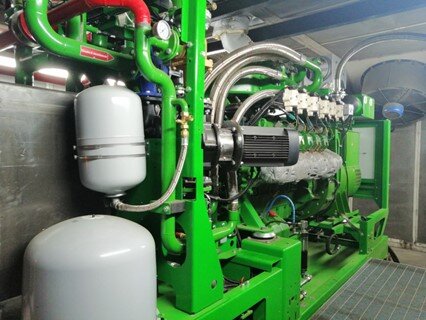Michelin Nord's energy transformation
Reduction of emissions, energy efficiency and economic benefits
Facts & figures

The Michelin Nord complex, with its high towers, became a symbol of Spina 3 after the 2006 Turin Olympics. Subsequently, the internal distribution of the buildings was modified to create 440 apartments, of which 117 were intended for public housing. The remaining housing units were destined for the free market or for rent with various subsidized rent methods.
In the thermal power plant of the complex, there was an old 1 mW Jenbacher cogenerator, now obsolete and oversized compared to the new needs. 2G Italia, together with its partner Engie, which offers innovative products and energy efficiency and integrated management solutions, supplied and installed the 550 kWe Avus 500plus in record time, replacing the old engine, to guarantee greater energy efficiency.
Engie, with the aim of reducing CO 2 emissions , asked 2G for a solution capable of reducing emissions into the atmosphere, to be delivered and installed quickly, configuring it as an island, completely autonomous and efficient.
The proposed cogenerator fully satisfied these needs. Thanks to the installation of an SCR system, atmospheric emissions have been significantly reduced compared to the old engine.
2G Italia achieved installation in just 6 weeks and ensured effective commissioning in a further 8 weeks, ensuring a rapid and seamless transition.
The engine demonstrated fully autonomous electrical operation, independent of the grid, in the event of a blackout.
The project brought a series of tangible benefits:
- Reduction of power consumption thanks to the size of the motor optimized with respect to energy needs
- Significant reduction in emissions into the atmosphere, contributing to environmental efficiency
- Economic benefits with revenues estimated at approximately €54,000 per year, for 10 years
- Assurance of 24/7 professional assistance through the 2G Service contract
Thanks to the synergy between Engie and 2G Italia, the Michel Nord complex has been transformed into a model of environmental sustainability and energy stability, satisfying both the needs of the community and the ambitions of a low CO 2 energy transition .